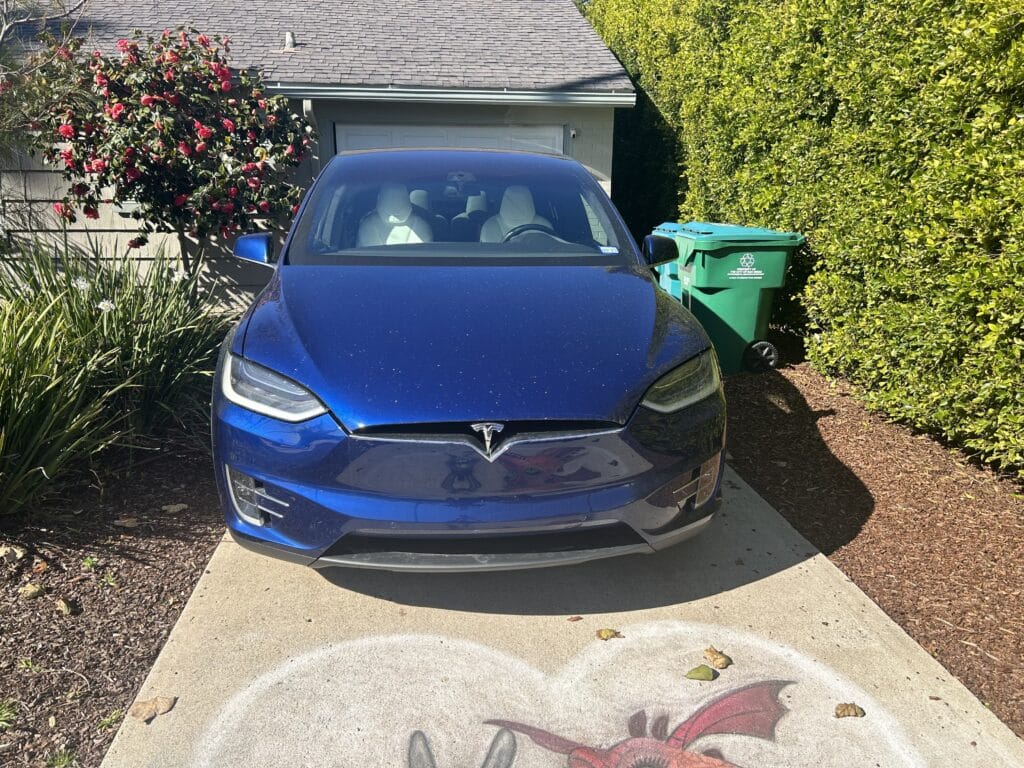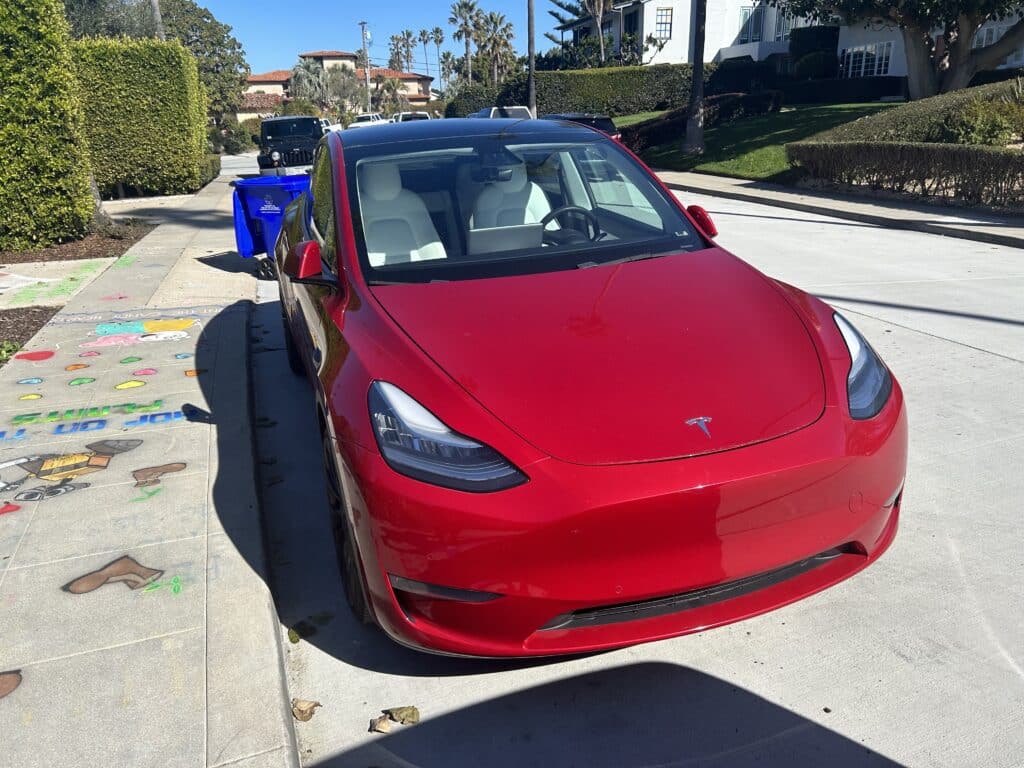Tesla, as withy many EV brands, has a battery disposal problem. Here is the latest on recycling Tesla, as well as other EV, batteries.
One decade ago, electric cars promised to transform our approach to transportation. Now, those early models are starting to reach the end of their lifespan, leaving consumers will an increasingly urgent question—“can I recycle an electric car battery?”.
In short, you can. However, the solution isn’t as simple as popping the battery out of your car and into a recycling box. Car batteries are bulky and expensive to take apart, with minimal potential for profit. But today, car manufacturers are starting to tackle this challenge head-on, and industry leader Tesla is leading the charge.
Here’s what you need to know about recycling a Tesla battery and what will happen to it once you do so.

The Problem With EV Batteries
From an environmental perspective, electric vehicles have many advantages over internal combustion engines. However, ease of disposal is not one of them. Battery recycling is a pricy, painstaking, and even dangerous prospect that leaves much to be desired.
Telsa car batteries are essentially battery packs. They vary by model, but most are made up of thousands of cylindrical cells that contain lithium, cadmium, graphite, and other trace components. Lithium-ion is renowned for its ability to hold a charge, and the multi-cell battery design makes it possible for Telsa to replace single cells that stop working rather than the whole pack.
Even with repairs, the entire battery will break down eventually—usually after 300,000 to 500,000 miles or approximately ten years of drive time—and needs to be dealt with. Let it languish in a landfill, and the batteries release toxins. But pull the battery cells apart without proper precautions, and they can release toxic gases and even combust.
Electric Car Battery Recycling Strategies
Recycling lithium-ion batteries is a tricky endeavor. The resulting materials are usually a downgrade from the equipment they came from, meaning they need to be used in something less complex. Historically, all recycling methods cost more than merely mining for new lithium.
Pyrometallurgy is the traditional extraction method. Recyclers will first mechanically shred the battery cells before burning everything into a charred pile. Multiple techniques are then used to extract the metals, almost as if they were ore coming straight from a mine. This method tends to be expensive, creates air pollution, and wastes a lot of what could be recycled.
Today, hydrometallurgy is more common. This involves soaking a battery in an acid solution until it separates into a metal-filled soup for easier extraction. With proper safety precautions, it’s an efficient and effective method for reclaiming nonrenewable materials within a car battery.
Telsa’s Official Battery Recycling Policy
To date, Tesla is one of the few companies that recycles 100% of its EV batteries.
But let’s clarify. This doesn’t mean that every component within each battery is recycled, just that the company recycles components of every battery it receives back. (No modern EV battery is 100% recyclable due to the multiple pounds of non-recyclable materials like adhesives and sealants they contain).
According to its 2021 Impact Report, Tesla has achieved 92% battery cell material recovery, recycling 300 tons of copper, 1,500 tons of nickel, and 200 tons of cobalt.
However, this isn’t representative of the company’s total recycling capacity, as most batteries came from Tesla’s private fleet or R&D and quality control testing. Since the brand has only been producing its EVs for ten years, consumer battery returns are only just starting to pick up as the oldest models reach the end of their lifespan.
Even so, Tesla has rolled out a consumer-focused battery recycling program for all vehicle owners.
According to the latest published data, Tesla is now recycling enough batteries to make 9,000 Model Y RWD vehicles, which is pretty impressive.

How to Recycle Your Tesla Battery
Per the company website, the Tesla Service Centers is the first resource for getting a faulty battery back in working order.
Extending the life of a battery pack is a superior option to recycling for both environmental and business reasons. For those reasons, before decommissioning a consumer battery pack and sending it for recycling, Tesla does everything it can to extend the useful life of each battery pack. Any battery that is no longer meeting a customer’s needs can be serviced by Tesla at one of our Service Centers around the world. None of our scrapped lithium-ion batteries go to landfilling, and 100% are recycled.
Tesla
Tesla requests that its lithium-ion battery packs only be handled by qualified professionals at designated facilities. You can start the process for repairing or recycling your battery by contacting Tesla directly.
There is no cost to consumers to recycle an EV battery. With current technology, Tesla pays approximately $4.50 per pound to recycle its battery packs, for a total price tag of around $6,750 per unit. This cost should continue to drop as technology improves and the company scales up its recycling efforts as customers start turning in their used EV batteries.
The Tesla Battery Recycling Process
Tesla’s goal is to master lithium-ion recycling to create a closed-loop process where new car batteries are made with the components of recycled ones. Recycling its batteries will significantly diminish the amount of raw materials necessary for new ones. However, as Tesla is working with third-party recyclers, the company loses some control over what happens to the material within its batteries once they make it to a recycler. Likewise, the company is not yet claiming to be making its new batteries out of recycled materials.
Before sending battery packs out to be recycled, Tesla will reuse about 10% of the battery by weight. This consists of the battery case and specific electrical components. The third parties that receive the batteries for further breakdown include the Kinsbursky Brothers (North America) and Umicore (Europe).
Per the Tesla company blog, the Umicore battery recycling technology saves upwards of 70% of total CO2 emissions by creating “products” and “byproducts” from each battery rather than following a mechanical separation process. Umicore uses the cobalt from these recycled batteries to make LCO (lithium cobalt oxide), which it sells to battery manufacturers for future use. Likewise, the byproduct consists of an environmentally-friendly slag that can be used within construction materials—thus reducing the need for new material.
About Redwood Materials
Another way Tesla is moving forward with a large-scale battery recycling program is through Redwood Materials, a recycling startup founded in 2017 by former Tesla CTO JB Straubel.
Redwood Materials aims to create a circular supply chain for electronic components, including cell phone batteries, laptops, power tools, electric bikes, and yes, Tesla battery packs. The goal is to take spent equipment from manufacturers and then sell back the extracted materials like cobalt, nickel, and lithium for continuous use. It claims to reduce CO2 emissions associated with EV batteries by about 80% compared to the current supply chain, which requires sourcing materials from Asia.
In recent years, the company has tripled the size of its existing plant in Carson City, Nevada, started construction on a plant near the Tesla Gigafactory in Sparks, Nevada, and announced plans to build a 600-acre ($3.5 billion) facility in South Carolina.
Electric Vehicle Battery Recycling: A Way Forward for EVs
The coming decades will be a time of experimentation and improvements for recycling EV batteries. For now, you can rest assured that Tesla is working through the logistical challenges and has plans in place to take back your old battery and put as much of it as possible back into use.